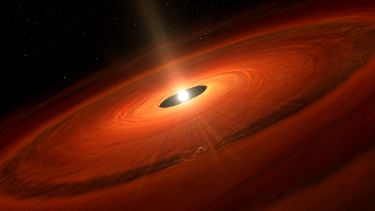- Dark Matter and Dark Energy make up 95% of the universe, yet they remain elusive, with no direct detection or universally accepted theoretical framework.
- New modelled data from the Dark Energy Spectroscopic Instrument (DESI), the Planck satellite, and supernova observations suggests that energy may be flowing from dark matter to dark energy.
- The interaction has a key effect: it changes the universe's expansion rate (H0) and reveals further mysteries about the dark sector and our universe.
Dark matter and dark energy - the mysterious components that make up the majority of the universe, may be interacting with each other. This cosmic handshake has the potential to change the way researchers understand the expansion of the universe.
A team of scientists at the University of Sheffield have modelled data from the Dark Energy Spectroscopic Instrument (DESI), the Planck satellite, and supernova observations, and found that energy may be flowing from dark matter to dark energy. This interaction has a key effect: it changes the universe's expansion rate (H0). Specifically leading to a higher (faster) H0 value.
Dr Eleonora Di Valentino says “Dark Matter and Dark Energy make up 95% of the universe, yet they remain elusive, with no direct detection or universally accepted theoretical framework. Given their dominance, it is natural to consider the possibility that they interact, exchanging energy between them. If such an interaction exists, it could provide a key to resolving the H0 tension and offer a compelling explanation for the latest DESI BAO Y1 results.”
An interaction between dark matter and dark energy (IDE) would challenge the current understanding of the universe and potentially reveal the nature of these mysterious substances. However, the researchers acknowledge a potential challenge. While the IDE model helps with the H0 discrepancy, it also predicts there's slightly less matter in the universe than suggested, and that matter is clumped together more than scientists thought.
“What is the nature of dark matter and dark energy? And why does our standard model of cosmology predict an expansion rate of the Universe that differs from the one measured by the SH0ES collaboration? Given how little we know about the 95% of the Universe, it is natural to ask whether cosmic tensions arise from our incomplete understanding of the dark sector. Our work shows that an interaction between these dark components can help resolve the Hubble tension while explaining the latest DESI Y1 BAO observations. This suggests that the dark sector holds a key piece of the puzzle, though much work remains to fit all the pieces together. ” Dr William Giare.
So, while this research offers a new perspective on the dark sector and the expansion of the universe, further study is needed. This is one more step to potentially solving the mysteries of the universe.


